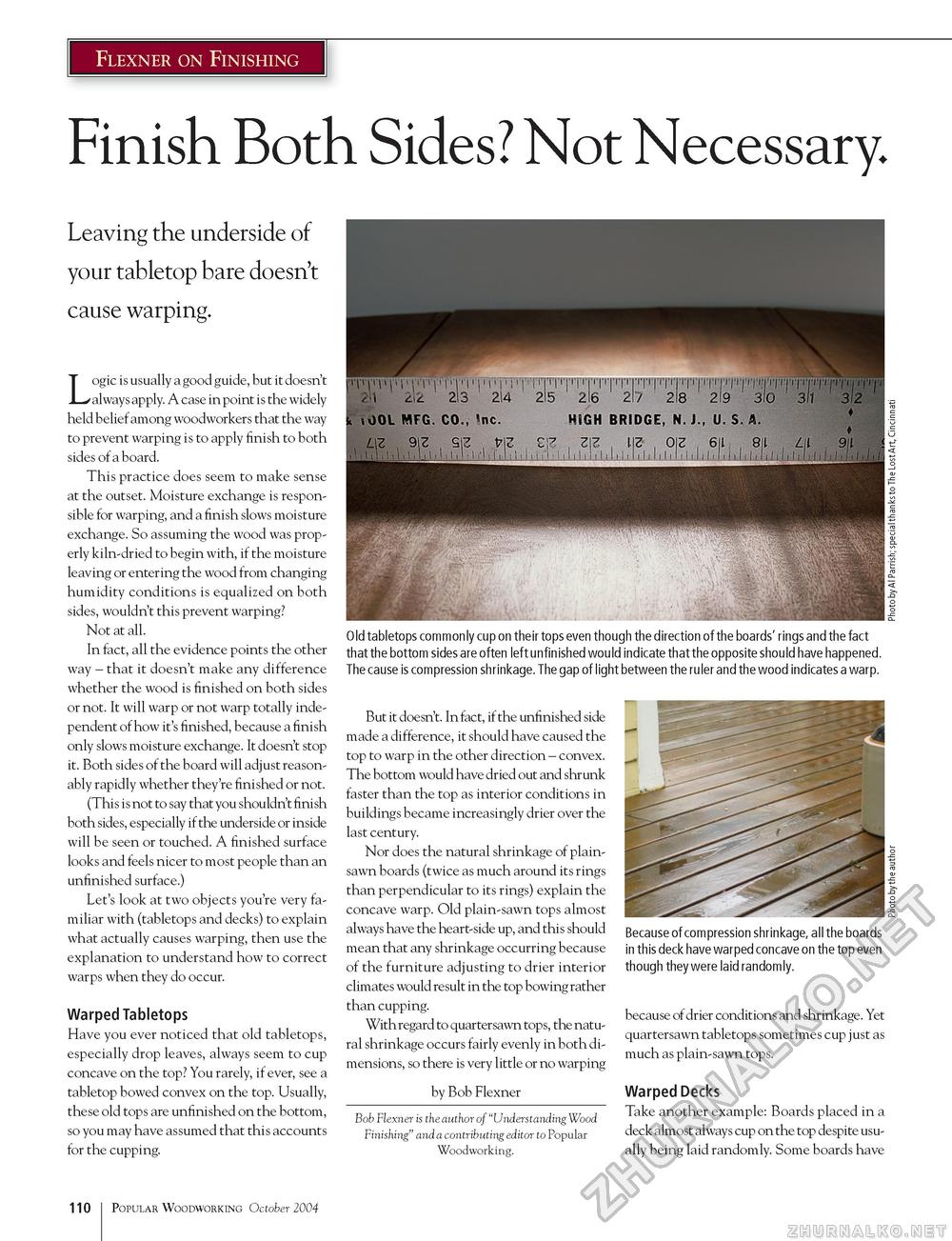Popular Woodworking 2004-10 № 143, страница 113
Flexner on Finishing Finish Both Sides? Not Necessary. Leaving the underside of your tabletop bare doesn't cause warping. Logic is usually a good guide, but it doesn't always apply. A case in point is the widely held belief among woodworkers that the way to prevent warping is to apply finish to both sides of a board. This practice does seem to make sense at the outset. Moisture exchange is responsible for warping, and a finish slows moisture exchange. So assuming the wood was properly kiln-dried to begin with, if the moisture leaving or entering the wood from changing humidity conditions is equalized on both sides, wouldn't this prevent warping? Not at all. In fact, all the evidence points the other way - that it doesn't make any difference whether the wood is finished on both sides or not. It will warp or not warp totally independent of how it's finished, because a finish only slows moisture exchange. It doesn't stop it. Both sides of the board will adjust reasonably rapidly whether they're finished or not. (This is not to say that you shouldn't finish both sides, especially if the underside or inside will be seen or touched. A finished surface looks and feels nicer to most people than an unfinished surface.) Let's look at two objects you're very familiar with (tabletops and decks) to explain what actually causes warping, then use the explanation to understand how to correct warps when they do occur. Warped Tabletops Have you ever noticed that old tabletops, especially drop leaves, always seem to cup concave on the top? You rarely, if ever, see a tabletop bowed convex on the top. Usually, these old tops are unfinished on the bottom, so you may have assumed that this accounts for the cupping. Old tabletops commonly cup on their tops even though the direction of the boards' rings and the fact that the bottom sides are often left unfinished would indicate that the opposite should have happened. The cause is compression shrinkage. The gap of light between the ruler and the wood indicates a warp. But it doesn't. In fact, if the unfinished side made a difference, it should have caused the top to warp in the other direction - convex. The bottom would have dried out and shrunk faster than the top as interior conditions in buildings became increasingly drier over the last century. Nor does the natural shrinkage of plain-sawn boards (twice as much around its rings than perpendicular to its rings) explain the concave warp. Old plain-sawn tops almost always have the heart-side up, and this should mean that any shrinkage occurring because of the furniture adjusting to drier interior climates would result in the top bowing rather than cupping. With regard to quartersawn tops, the natural shrinkage occurs fairly evenly in both dimensions, so there is very little or no warping by Bob Flexner Bob Flexner is the author of "Understanding Wood Finishing" and a contributing editor to Popular Woodworking. Because of compression shrinkage, all the boards in this deck have warped concave on the top even though they were laid randomly. because of drier conditions and shrinkage. Yet quartersawn tabletops sometimes cup just as much as plain-sawn tops. Warped Decks Take another example: Boards placed in a deck almost always cup on the top despite usually being laid randomly. Some boards have 110 Popular Woodworking October 2004 |








